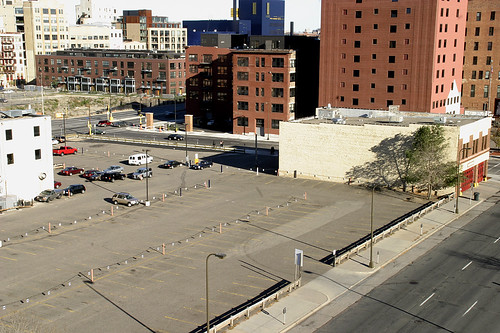Larry, if I'm not mistaken it relates to how people interact with spaces in an urban environment. Density is the key concept here. Though it may seem counter-intuitive at first, those wide open spaces actually discourage people from wanting to be outside and interact with their city. For instance, take this photo, it could be any random area in Houston:

Imagine yourself walking in this area. Would you feel safe? Would it feel inviting? The answer, is probably no. There's a reason for that. Psychologically, we actually feel safer and interact in spaces that are more at the human level. And those are ones with narrower streets, and the "urban canyons," which have been discussed in great detail on this thread. For example,

That lovely little district in Charlottesville, VA practically begs people to be outside, walkaround and enjoy the built environment. This next shot is what I think of as an urban canyon:

In this shot from downtown Calgary, Notice there are no "missing teeth" gaps, and wide open spaces. Things are hemmed in pretty well, and it all feels very warm and inviting. And it's not just empty lots, and buildings that are set too far back from the street - urban plazas are often deadzones as well that discourage an urban feel. This could be the Robinson corridor one day if the right decisions are made from the urban planning standpoint. There's a great book by Jane Jacobs that was a real eye opener for me. You can find it here - it's a great place to start:
Amazon.com: The Death and Life of Great American Cities (Modern Library Series) (9780679600473): Jane Jacobs: Books
My interest in urbanism is purely from the layperson point of view, and I think it's something we can all benefit from learning more about. I certainly have.





 Reply With Quote
Reply With Quote





Bookmarks